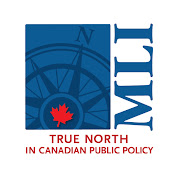(WHTM) – Earthquakes are large seismic events that occur when tectonic plates manage to move under, over or slide past each other, sending energy in waves across the Earth’s crust.
But how are earthquakes currently measured?
According to the United States Geological Survey (USGS), earthquakes are recorded by a seismographic network which measures the movement of the ground at each perspective site of a seismic station.
Magnitude is the most common measure of an earthquake. The magnitude is a measure of the source of the earthquake and its size. Currently, USGS reports an earthquake’s magnitude using the Moment Magnitude Scale.
According to Michigan Tech, the magnitude scale is as follows:
| Magnitude | Earthquake Effects |
| 2.5 or less | Earthquakes are usually not felt but can be recorded by a seismograph. |
| 2.5 to 5.4 | The event is often felt but only causes minor damage. |
| 5.5 to 6.0 | There is slight damage caused to buildings and other structures. |
| … |






![Is a 4.8-magnitude earthquake big? [Video]](https://energynewsvideo.com/wp-content/uploads/2024/04/mp_341186_0_USGSMap43e6b3jpg.jpg)




![Jane Fonda shares non-Hodgkins lymphoma diagnosis Action News Jax [Video]](https://energynewsvideo.com/wp-content/uploads/2022/09/mp_2309_0_NUSSULULVJG6VLHO5HCVQZTCEMjpg-1200x675.jpg)
![Biden Says U.S. Will Not Participate In Counter-strike Against Iran, Meets With G7 Leaders To Discuss A Diplomatic Response [Video]](https://energynewsvideo.com/wp-content/uploads/2024/04/mp_349067_0_bidensaysuswillnotparticipateincounterstrikeagainstiranmeetswithg7leaderstodiscussadiplomaticresponsewebp.jpg)
![Ellsworth clean-up events help beautify the city | Local News [Video]](https://energynewsvideo.com/wp-content/uploads/2024/04/mp_359897_0_662d873490facimagejpg.jpg)
![Mayor Dan Of Oak Creek Previews CAFE Day [Video]](https://energynewsvideo.com/wp-content/uploads/2023/12/mp_260202_0_SL092323OCTCafeCBS58980x551jpg.jpg)
